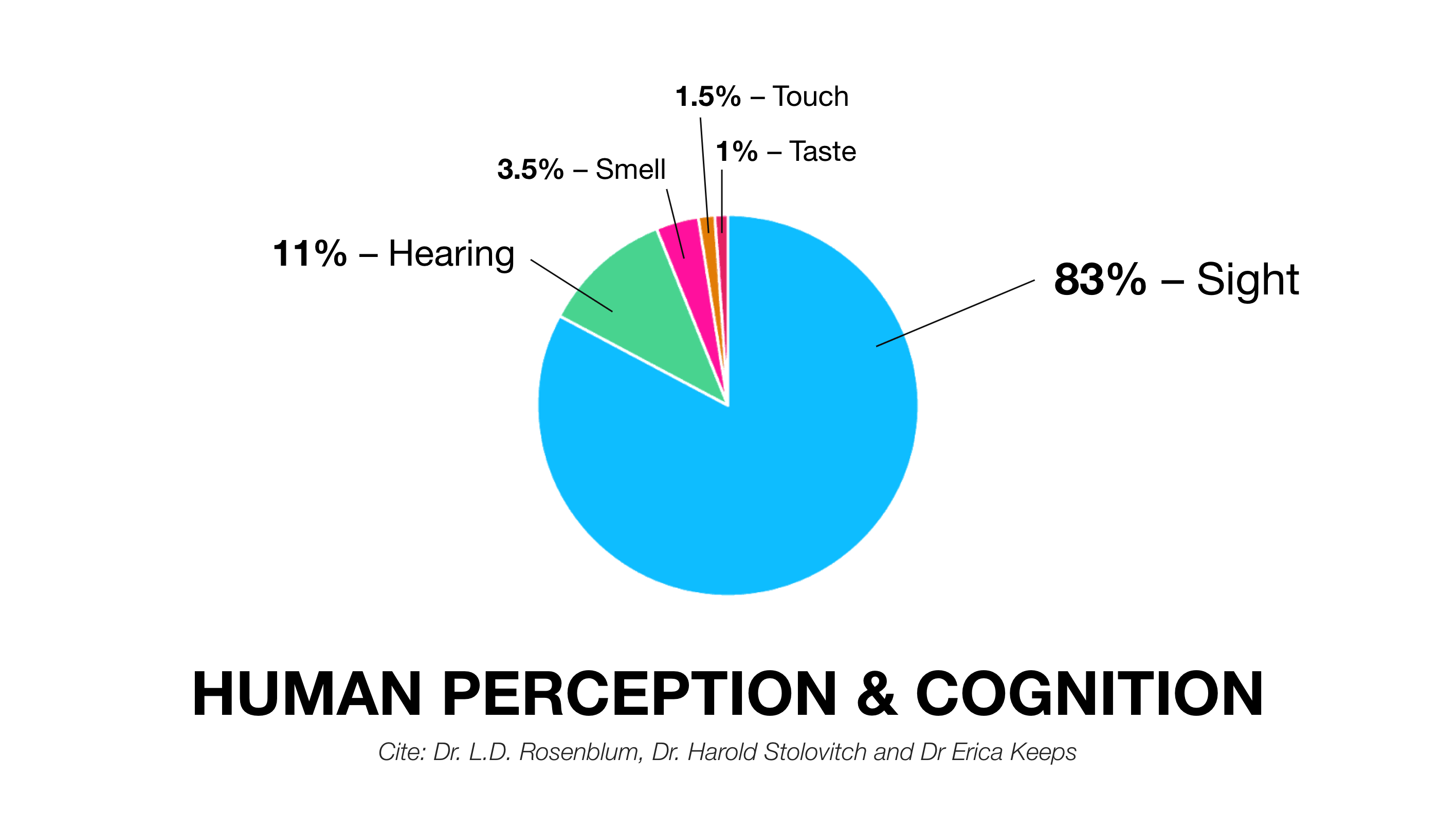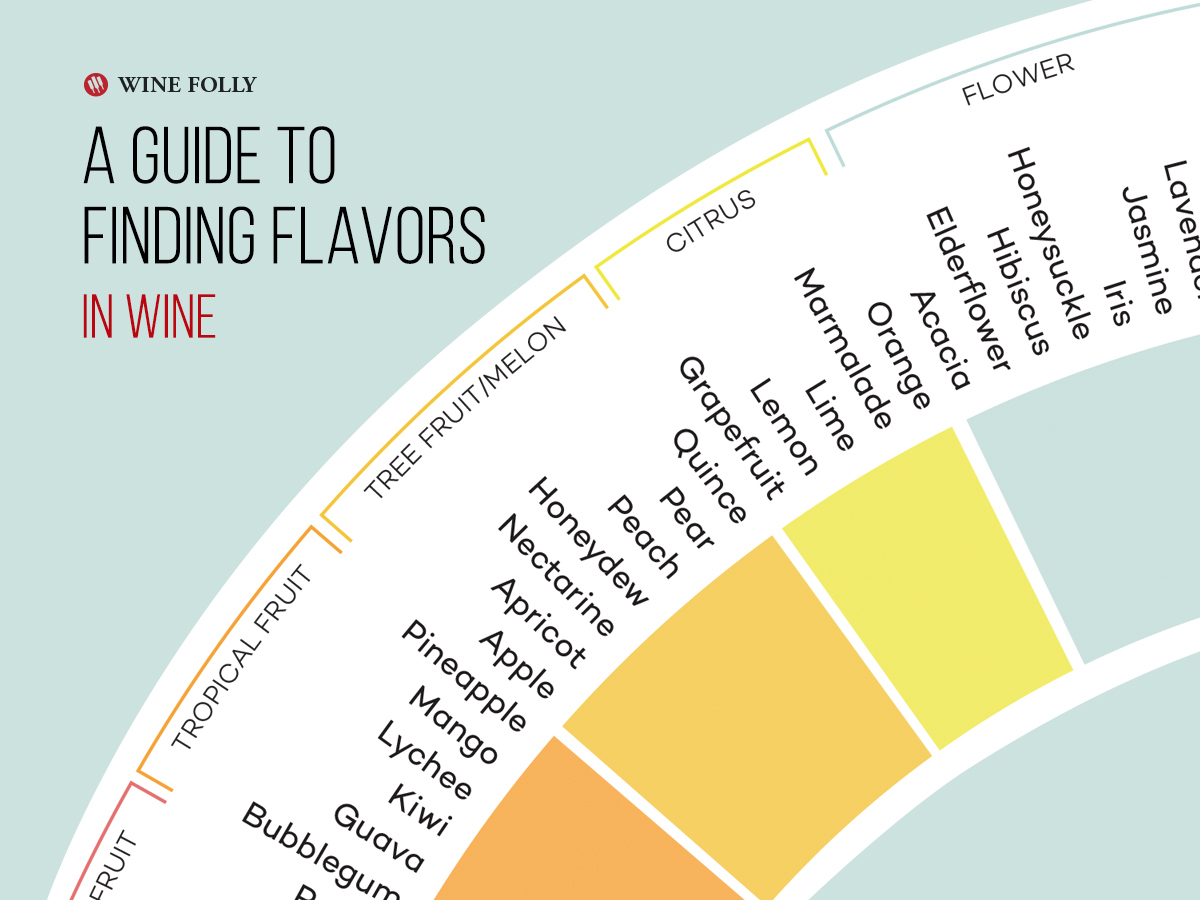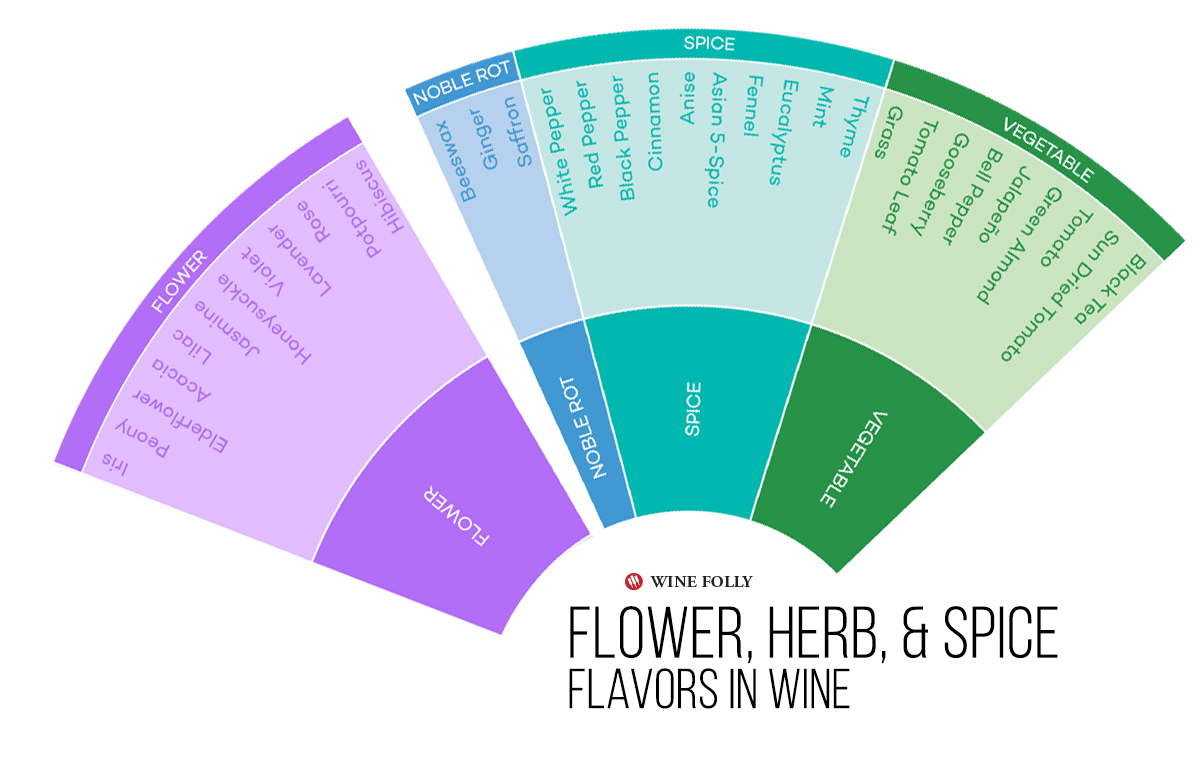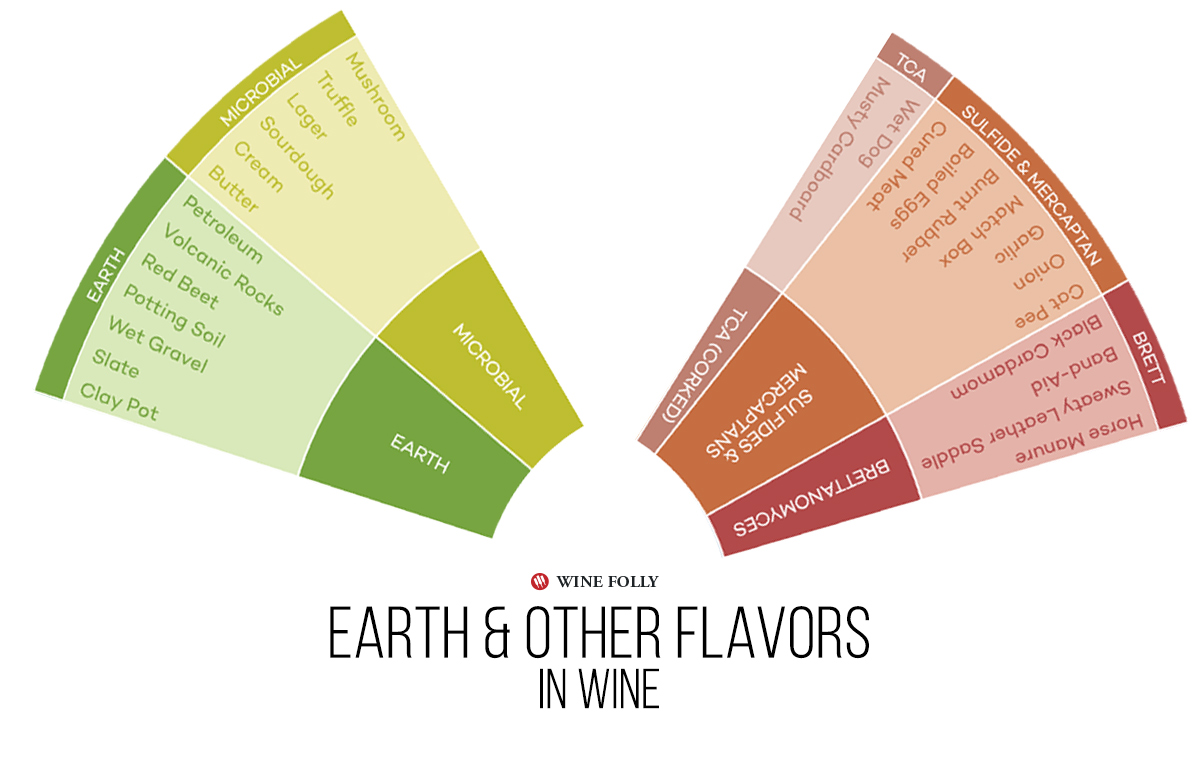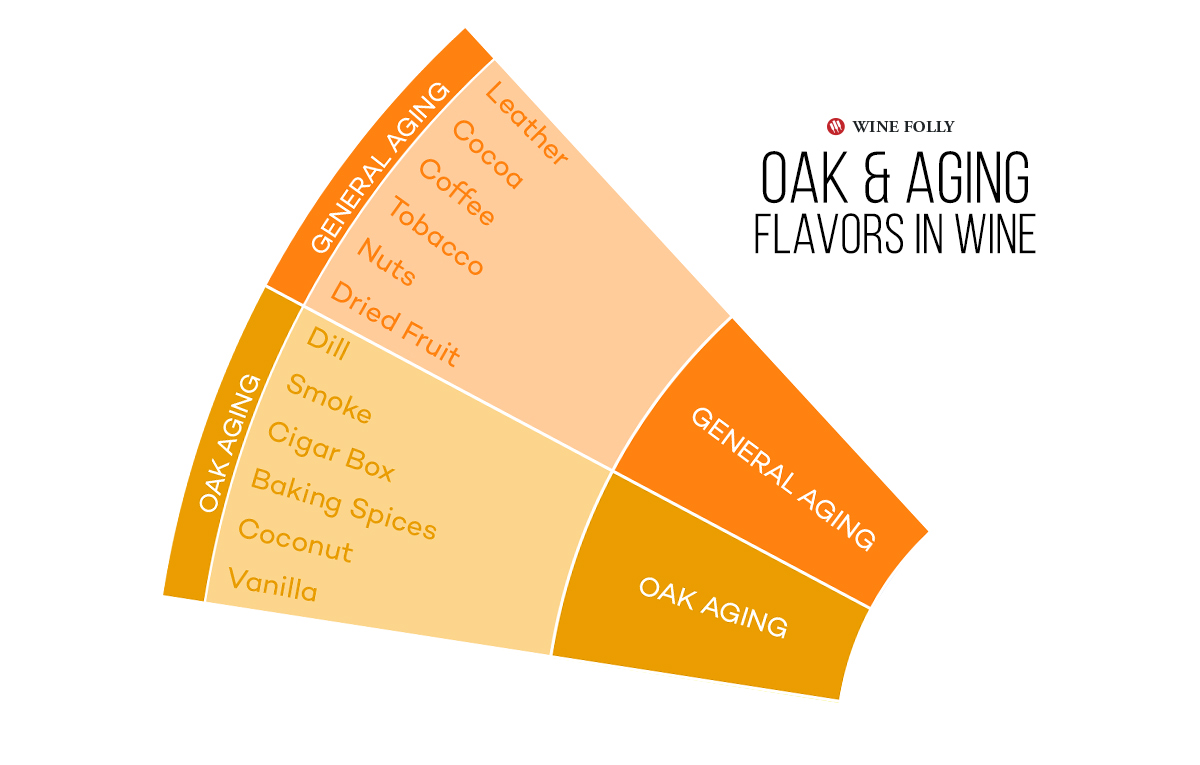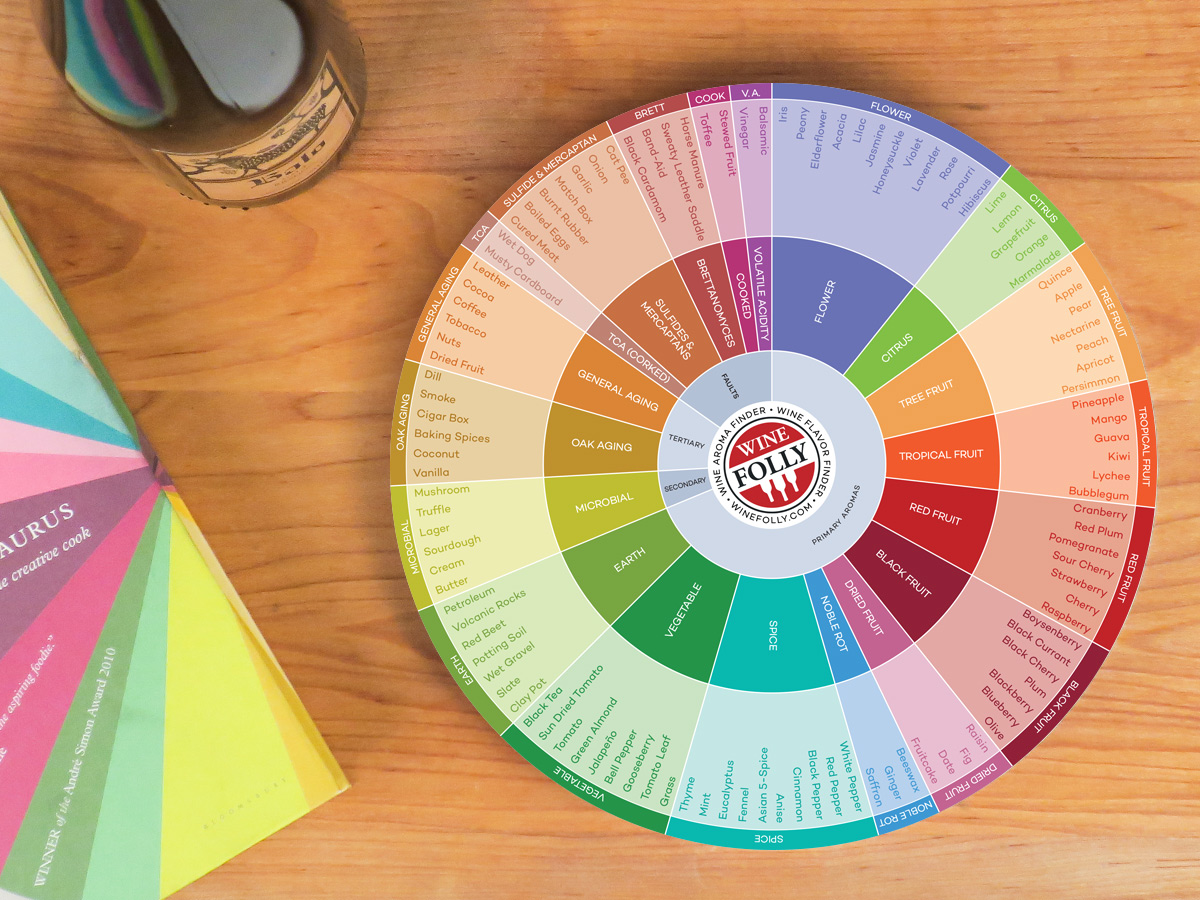Finding wine flavors isn’t easy. Sure, it’s simple to swallow wine, but that isn’t exactly the point!
Wine is unique because it demands keen sensory skills. What’s interesting is that smell and taste are two of our least valued observational skills.
Fortunately, learning to find flavors improves those underused senses; it also challenges mental cognition. In fact, wine tasting improves the part of your brain first affected by memory disease (your entorhinal cortex, to be exact)!
So, how does one learn this skill? Read on! (Hopefully, with a glass of wine nearby.)
A Guide to Finding Flavors in Wine
How to find wine flavors: step-by-step
First things first, use the proper drinking vessel. The bowl shape of a wine glass has been shown to deliver aromas in a consistent, predictable way. By the way, there are several different types of wine glasses from which to choose!
Then, pour about three ounces or 75 milliliters of wine. This is enough to sniff and taste, but not too much to make it difficult to swirl.
Swirl the glass, close your eyes, and take a slow, deliberate sniff.
At this point in the process, everyone has a slightly different technique. Keeping your eyes closed helps separate what you smell from what you see. That’s the goal.
Suddenly, you’re no longer smelling wine, you’re smelling something.
The goal is to focus on the something until you know what it is. It could be a bowl of crushed black cherries, freshly grated nutmeg, or even a bag of potting soil.
High-quality wines have a more complex array of aromas, all wrapped together. Lower-quality wines are more simplistic in their flavor profile.
Fruit Flavors
Some tasters are generalists (i.e. “citrus notes”) and others are excruciatingly exact in their flavor identification (i.e. “Meyer lemon zest”). Either way, try to focus on the condition of the fruit. Is it fresh? Unripe? Ripe? Dried? Sweet? Candied? Roasted? Preserved?
Try to smell the following fruit flavors in wine:
- Citrus fruits, including lime, lemon, grapefruit, etc.
- Tree fruits and melons, including apple, pear, peach, honeydew, etc.
- Tropical fruit, including mango, pineapple, lychee, etc.
- Red fruit flavors, including strawberry, red plum, raspberry, etc.
- Black fruit, including blackberry, blueberry, olive, etc.
- Dried fruits like dried figs and dates.
Flower, Herb, & Spice Flavors
Very often, there are flavors in wine other than fruit. Wines share many of the same aroma compounds as different flowers and plants. For example, Beta-damascenone is found in roses and Pinot Noir!
Flower and herb categories to consider while sniffing:
- Floral aromas, including roses, elderflower, violet, iris, bergamot, and hibiscus.
- Green aromas, including grass, gooseberry, bell pepper, green pea, and tomato leaf.
- Tea-like aromas, including black tea, Darjeeling, green tea, Matcha, Rooibos, and Earl Grey.
- Minty smells, including mint, peppermint, eucalyptus, menthol, sage, fennel, and wintergreen.
- Herb notes, such as thyme, oregano, rosemary, tarragon, and basil.
- Spice aromas, such as cinnamon, black pepper, red pepper, anise, and Five-Spice blend.
Earth, Mineral, & Other Aromas
The fermentation process is what unlocks all the complex aromas in wine. The microbes responsible for turning grape juice into wine also produce a variety of other interesting smells.
- Earthy smells, including wet clay pot, potting soil, red beet, and mushroom.
- Yeasty aromas like beer, lager, sourdough, milk chocolate, and buttermilk.
- Rustic aromas, such as tanned leather, old leather, black cardamom, barnyard, cured meat, and tobacco smoke.
- Chemical-like aromas, such as petroleum, new plastic and rubber.
- Mineral smells, including petrichor, wet gravel, slate, and volcanic rocks.
Aging & Oak Flavors
After the fermentation is complete, the aging process (which includes oxidation and oak barrels) also adds flavors to wine.
- Oak adds flavors of vanilla, allspice, clove, coconut, cigar box, cedar, cola, and dill.
- Aging (oxidation) adds flavors such as dried fruit, hazelnut, tobacco, chocolate, leather, browned butter, and baked apple.
Get The Wine Flavor Wheel
Practice with Wine Folly’s Aroma Charts, specifically designed for wine tasting. The charts include over 100 familiar wine aromas organized by category, including wine faults.
